- 1. West Caldera Rim (Easy)
- 2. Discovery Point (Easy)
- 3. Watchman or Diamond Lake Overlooks (Moderate)
- 4. Raven Trail (Difficult)
- 5. Sun Notch (Difficult)
- 6. Around the Lake (Advanced)
- 7. Guided Snowshoeing Tours
- 8. What to Wear Snowshoeing in Crater Lake National Park
- 8.1. Feet, Hands, Head & Face
- 8.2. Base Layer
- 8.3. Mid Layer
- 8.4. Top Layer
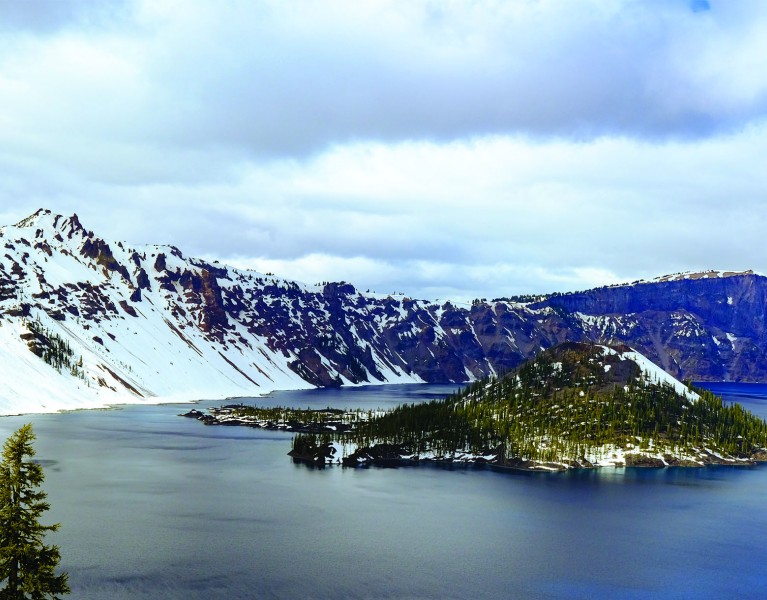
The Best Crater Lake Snowshoeing Trails
Table of Contents [Show]
Oregon is chock-full of natural wonders that attract hundreds of thousands of outdoor enthusiasts each year. Surprisingly, the state hosts only one national park, but it's truly a sight to see. Crater Lake National Park is home to the deepest lake in North America. The caldera was formed by a giant volcanic explosion from Mount Mazama, and decades of rain and snow melt filled the crater to create the extraordinary lake we see today.
For most of the year, the park is booming with visitors from all over the world who want to take in the majestic lake, hike the many trails and view the unique volcanic formations. In winter, the park quickly becomes a wonderland covered in deep drifts of snow. The park remains open, but many of the facilities are closed for the season, including the main road around the lake, Rim Drive. This creates the perfect landscape for snowshoeing! There are many snowshoeing trails throughout the park, ranging from easy to difficult. All allow you the chance to snowshoe in one of the most picturesque areas of the country. Here's a short list of the best snowshoeing trails at Crater Lake.
1. West Caldera Rim (Easy)
The caldera rim at Rim Village is perfect trail for beginners or anyone looking for a calm trek through the snow. This half-mile, even-terrain section of the rim never veers too far from your vehicle and offers spectacular views of the lake. Keep in mind that most of the facilities, like the iconic Crater Lake Lodge, are closed during the winter.
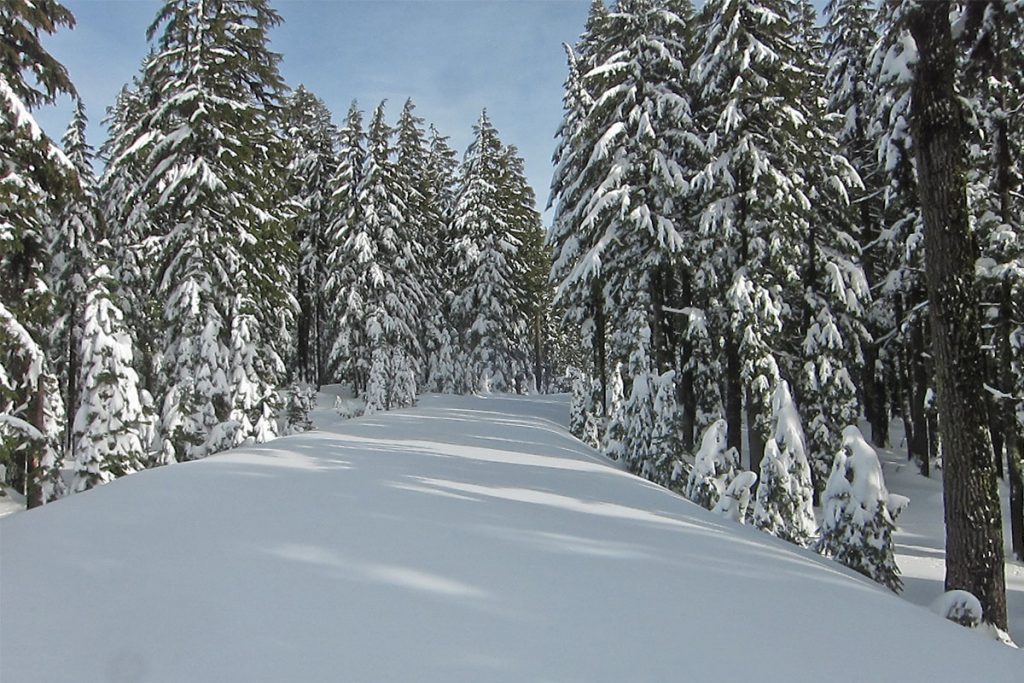
2. Discovery Point (Easy)
Discovery Point Trail is an incredibly popular hike during the summer and an even better snowshoeing trail in the winter. The lookout is about 1.2-miles from Rim Village, so expect a little over 2 miles for an out and back hike. This trail offers an incredible view of Wizard Island, one of two small islands within the caldera. Wizard Island is technically a sleeping volcanic cinder cone that was formed after the cataclysmic explosion of Mount Mazama. During the summer you can take a boat tour and explore the island on foot!
3. Watchman or Diamond Lake Overlooks (Moderate)
Once you reach Discovery Point you have the option to turn back toward Rim Village or to keep following the trail along West Rim Road. If you continue for 3.9 miles, you’ll be rewarded at Watchman Overlook. The trek may test your endurance, but the sweeping views of Crater Lake are well worth it. Snowshoe 1.6-miles farther and discover Diamond Lake Overlook, offering even more spectacular vistas. Each of these locations are solid options for those looking for a bit of a workout. Be prepared to spend at least half of your day on this hike.
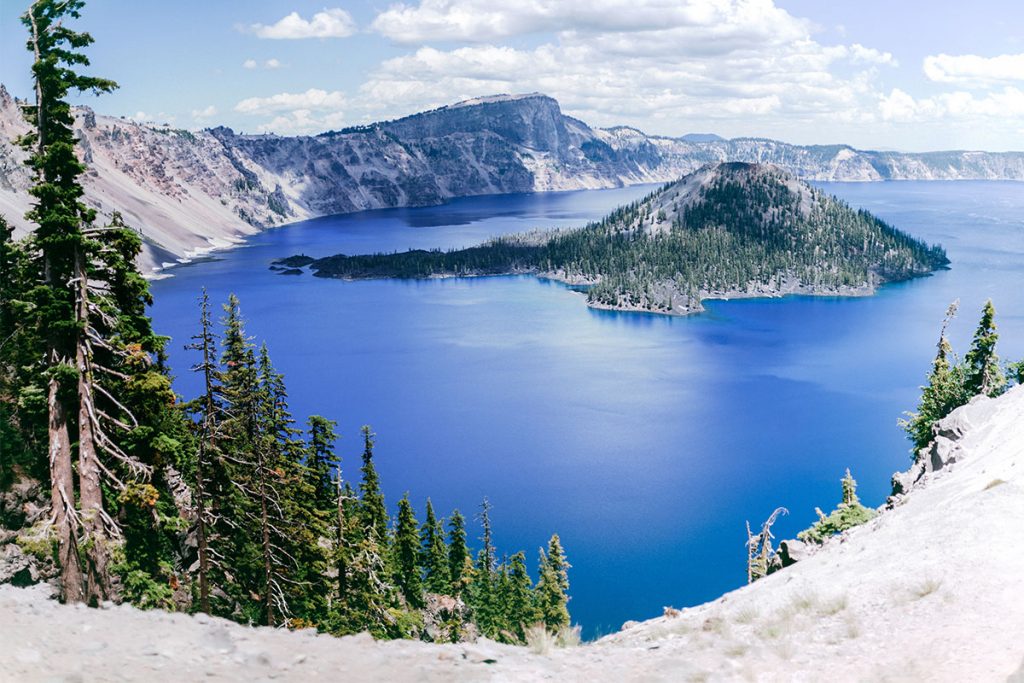
4. Raven Trail (Difficult)
Sometimes the road from the visitor center to Rim Village is closed in the winter. If weather allows, you can snowshoe to Rim Village on Raven Trail. The trail is only one mile long but comes with a steep incline of 610 feet in elevation. There’s also a short section that is the run out of an avalanche shoot, so be careful when you come across this area. The end of the trail will lead you to an amazing view of the park and plenty of space to enjoy the peace and quiet of a winter day.
5. Sun Notch (Difficult)
Sun Notch is located about 4 miles east of park headquarters. Travel south along East Rim Drive and take the Applegate Avalanche Bypass Route to find the trail head. Once you reach the trail head, it’s a short, steep 0.8-mile hike through snow covered trees to an excellent viewpoint. Enjoy a glimpse of Phantom Ship, another island within the lake and one of the oldest geologic formations inside the park.
6. Around the Lake (Advanced)
If you’re looking for the ultimate adventure, circumnavigate the entirety of Crater Lake. It’s a quest that is only meant for those experienced with overnight backpacking journeys, especially in tough conditions. It’s a 31-mile trek that will take 3 to 5 days, depending on the weather. There is no marked route and limited access to service; you have to cross multiple avalanche zones; and there are no shelters. Every year, at least 50 adventurous snowshoers complete this epic journey. If you don’t want to trek around the whole lake, you can still pitch a tent to spend the night by the lake. Don't forget your backcountry camping permit.
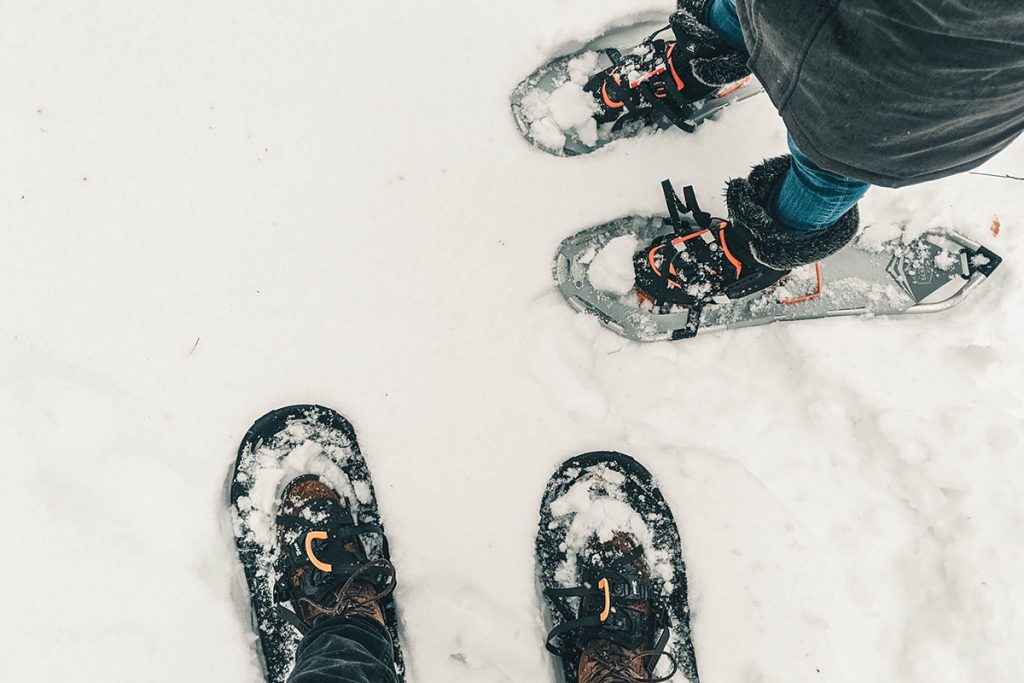
Guided Snowshoeing Tours
Every weekend, from December 7th through April 26th, there are ranger-guided snowshoe tours in Crater Lake National Park. Each tour lasts about two hours and will lead you to amazing sites, like an old-growth forest full of towering Hemlocks. The tours are specially designed for those with little to no experience with snowshoeing and are a great option for those looking to be part of a group. Snowshoes are provided at the Rim Village Gift Shop, so there’s no need to bring your own.
Unfortunately, the ranger tours are not operating in 2022, but there are some local outfitters nearby who will guide you on an adventure through the snowy landscape of Crater Lake. Sky Lakes Wilderness Adventures offers some exciting tours, including a 3-day trip around the entire lake!
What to Wear Snowshoeing in Crater Lake National Park
One of the more crucial components when preparing for your snowshoeing adventure is to dress appropriately. It’s going to be cold, but you will work up a sweat. Layers are the way to go. Check the weather before your trip so you can pack the right gear. If unsure, bring more layers than you may need.
Feet, Hands, Head & Face
Keeping your feet protected from the cold, wet snow is incredibly important. You need a quality pair of merino wool socks to keep your feet dry and warm. You also need a solid pair of snow boots to shield your feet on your journey. Protect your hands with two layers: a thin pair of gloves covered by a sturdy pair of mittens that are insulated and water resistant.
For your head and face, pack a hat that fits snugly around your ears and a face mask or scarf to protect you from harsh winter winds. The ALF Hat has ear flaps for warmth, a chinstrap for extra security, and wind and water-resistant materials for the snowiest of days. For even more protection, pair with a KÜHL Neck Gaiter for extra warmth, especially on those multi-day hikes.
Base Layer
The layer closest to the body, the base layer should be form-fitting, lightweight, and made of moisture-wicking material. The purpose of the base layer is to keep you dry and warm. The Akkomplice Krew long sleeve shirt is a great choice. Made with 100% polyester, it’s ultra-lightweight but will keep you warm. It is an ideal choice for long hikes on cold days. Made with Merino wool for extra comfort, the Valiant short sleeve shirt is another great option for your base layer.
Mid Layer
The Mid Layer acts as the insulator for your winter adventures. This layer consists of a long-sleeve shirt or jacket made from fleece, polyester, or down material. The Interceptr Full Zip jacket is made from high-quality fleece for superior warmth, comfort, and durability.
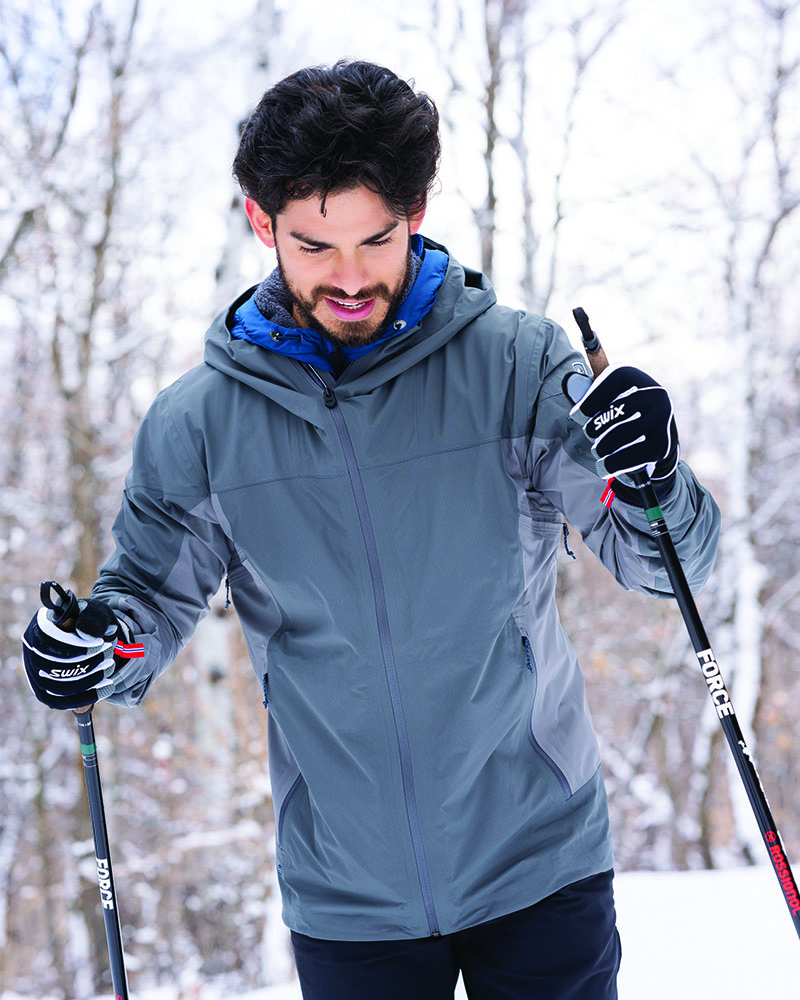
Top Layer
The goal of the top layer is to protect you from elements like wind, rain, or snow. For that, you want something made with peak performance material for wind and water resistance. On warmer days, bring a lightweight, breathable soft-shell jacket like The One Shell. For colder days, a hard shell jacket like the Kopenhagen Insulated Shell provides great protection from the elements.
Crater Lake National Park provides one of the best locations for a snowshoeing adventure. The magical, snow-filled scenery offers a wonderful opportunity to enjoy solitude in nature or to spend time with family and friends in the crisp fresh air. Before heading out to Crater Lake, check weather and road conditions. Don’t forget to dress in warm layers. Strap on those snowshoes, and head out for a scenic snowy good time!
Featured image by James Rathmell.


